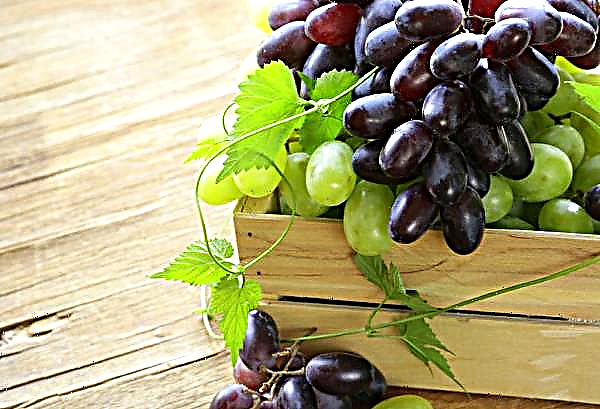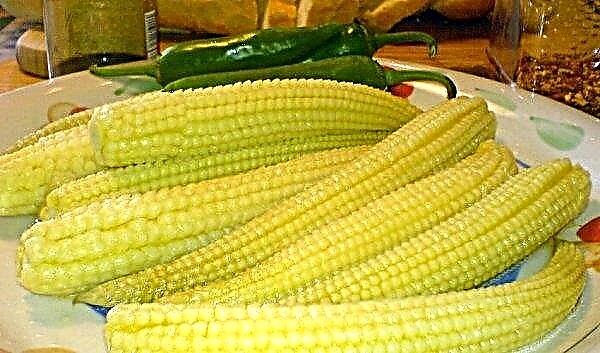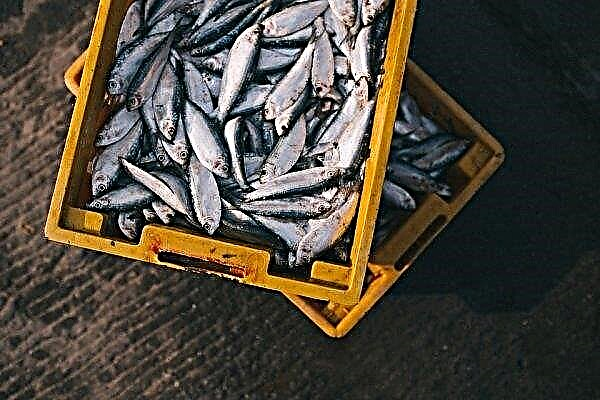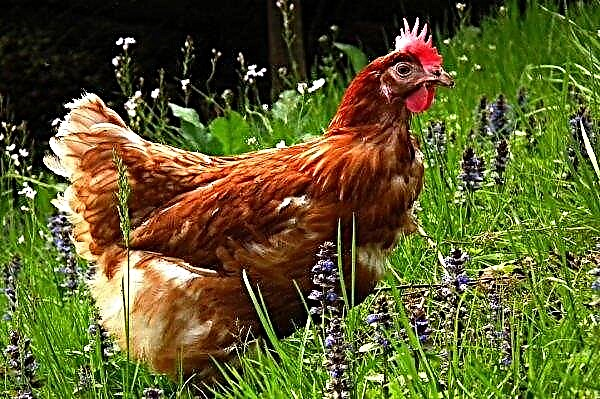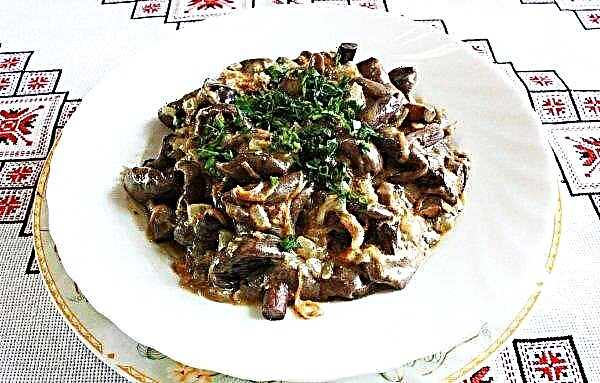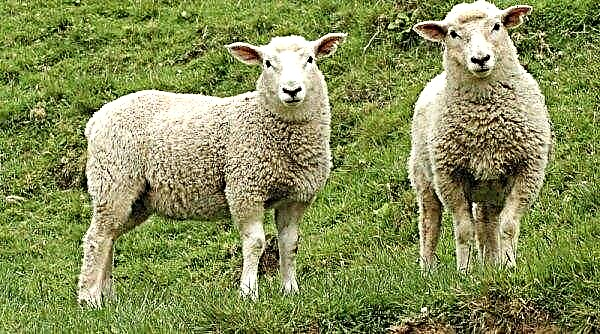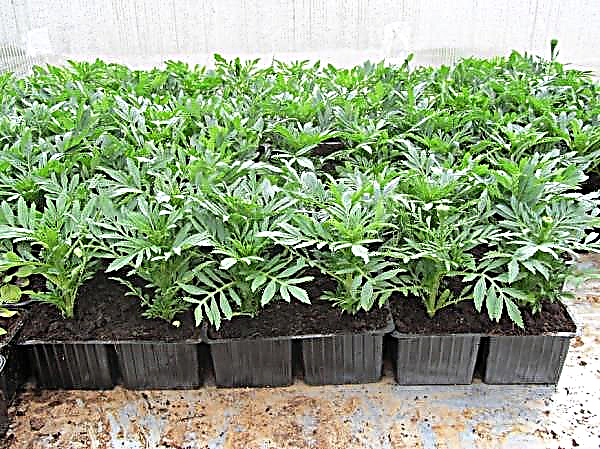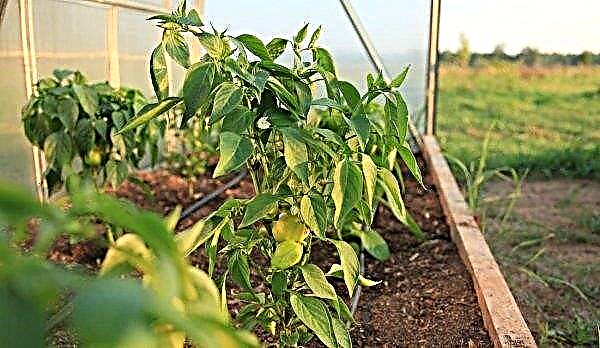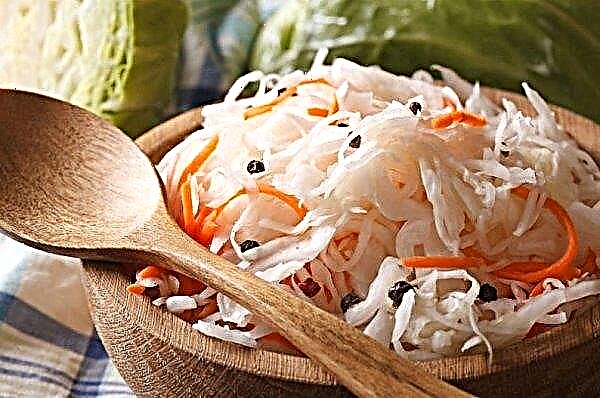Lush and strewn with bright flowers, hydrangeas are one of the most decorative garden plants. Although they are quite demanding in cultivation, it is worthwhile to give them time and attention - shrubs can be used to create impressive hedges or planted in flower beds. Thanks to the work of breeders, new beautiful varieties of this culture regularly appear. Confetti panicled hydrangea will be presented in the article, its description will be given, and secrets on planting and further care of the variety will be revealed.
Description of hydrangea confetti
This is panicle-shaped hydrangea of a bouquet type, reaching a height of about 1.2 m. The bush is sprawling, usually its diameter is 70–80 cm, shoots are thick, strong, with broad roundish bright green leaves. It has large, airy, oblong, slightly pointed to the apex inflorescences (panicula) in the form of panicles up to 30 cm long, consisting of a huge number of small flowers with thin petals. They bloom from July to September, emitting a delicate, pleasant aroma that attracts butterflies and bees, and gradually change their color - from snow-white to cream, and later turn pink with various shades.
It is recommended that the Confetti be trimmed annually to give it a neat shape and increase the number of shoots. The variety was bred in the Dutch kennel Boskoop, its author is Peter Vlasveld, who first introduced Confetti at the Plantarium exhibition in 2014.
Did you know? Hydrangea wilt begins immediately after separation from the mother bush. To keep the branches with inflorescences fresh, it is recommended to dip the slices in boiling water for a few seconds, and then put the bouquet in a vase with cold water.
Application in site design
Thanks to its compact size, the Confetti bunch of shrubs can be successfully grown in small gardens. In small areas it will look great in pots: on a small balcony, a modest terrace or patio. The variety feels great in the company of other hydrangeas. With its help, you can create a composition of perennial plants, compiling them according to the height and color of the leaves.
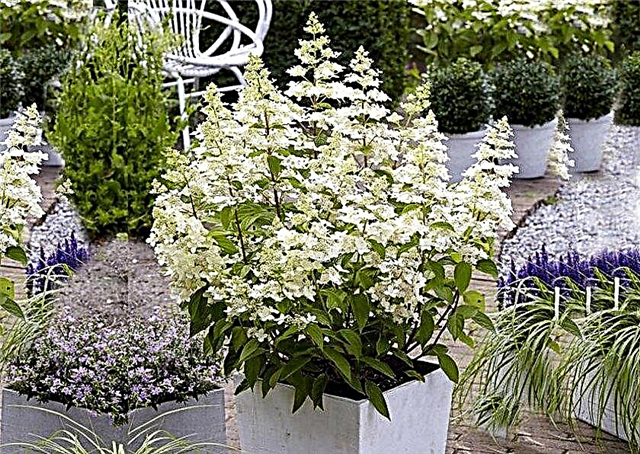
Landing
The Confetti variety is a perennial plant that will remain in the garden for many years, in connection with this, the owner must try to do everything right, starting from the moment of planting. The future location is carefully chosen immediately, taking into account the requirements of the culture. Preparatory work is underway with a substrate in which the root system will develop. It is also very important to dig up a landing hole of suitable sizes and correctly install a seedling in it.
Did you know? Dry hydrangea inflorescences are used in winter bouquets, both in their natural state and after decorative coloring.
Seat selection
Confetti loves shady and humid positions; in open sunny places, the roots of a moisture-loving culture dry out too quickly. It requires location in places sheltered from the wind, as its gusts can break the shoots, crowned with large inflorescences. Another important condition is the absence of higher and spreading plants nearby, because the shrub grows best in single plantings.
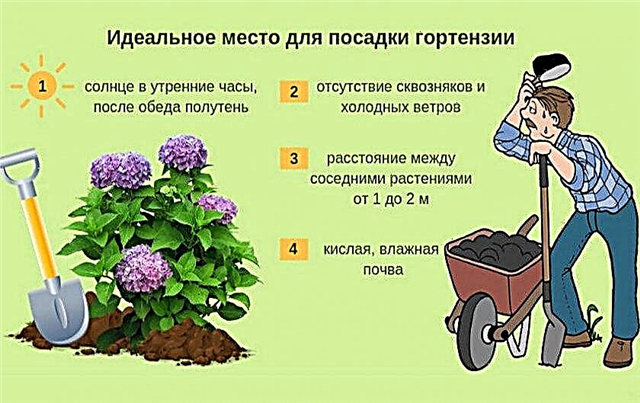 The earth must be fertile, humus and moist, with an acid or alkaline reaction.
The earth must be fertile, humus and moist, with an acid or alkaline reaction.
Soil preparation
It is known that the ideal land conditions for hydrangeas are not found in every garden. Therefore, in the place where it is planned to grow the plant, the soil will require preliminary preparation. Compacted soils must be loosened by adding gravel, peat or crumb of pine bark to them. In emaciated and barren - add compost or manure.
Hydrangeas grow best on acidic or slightly acidic substrates, that is, with a pH in the range of 4.5–6.5. Under these conditions, the bushes grow and develop correctly. On soils with a pH of 6.5 and higher, yellowing, drying and falling of leaves appear, which indicates a disease of chlorosis. The reason is that under such conditions, plants cannot extract iron, manganese and aluminum from the soil.
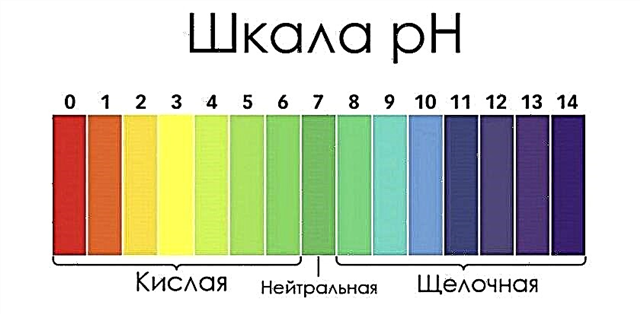 Too high a pH of the earth is required before planting hydrangeas to lower to the optimum level. To this end, a substrate is prepared by mixing peat, pine bark, sawdust and physiologically acidic fertilizers, such as ammonium and potassium sulfate, urea.
Too high a pH of the earth is required before planting hydrangeas to lower to the optimum level. To this end, a substrate is prepared by mixing peat, pine bark, sawdust and physiologically acidic fertilizers, such as ammonium and potassium sulfate, urea.
If a gardener wants to get the right color for inflorescences of certain cultivars, they must be equipped with a substrate with a very specific pH. Confetti is characterized by pink and red flowers, so it should grow in soil with a pH in the range of 5.5–6.0, while plants with blue petals should have soil with a pH in the range of 4.5–5.0.
Landing process
If you plan to plant several cuttings of the Confetti variety nearby, the distance between them should be at least 100 cm.
Landing:
- They dig a hole twice as large as the root coma of hydrangea seedlings and lay a drainage layer on its bottom.
- Set the seedling in the center of the recess in the ground, and fill with the substrate the voids remaining on the sides.
- After planting the bushes, the soil around them should be formed in the form of a bowl with a recess near the trunk, to collect water in the root zone.
- Seedlings are abundantly watered, after which, if necessary, soil is added, and a layer of mulch or gravel must be laid around them.
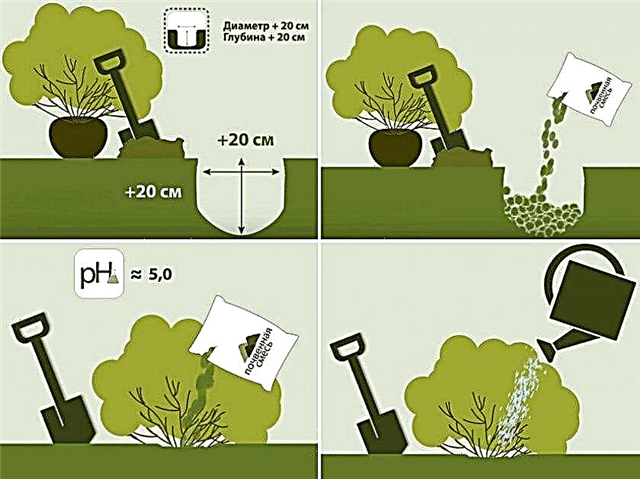
Care
Caring for perennial shrubs, as well as for other garden plants, consists of several stages. This is the supply of moisture in the volumes required by the culture for normal growth and development. Systematic feeding of hydrangea, as insufficient nutrition will adversely affect the formation of inflorescences. It is also necessary to keep the soil surface on the flower bed clean of weeds, for which it is regularly loosened or mulched. For Confetti, the annual spring haircut of the aerial part is also obligatory.
Important! Hydrangeas need to be given moisture often and plentifully. But you should be careful when doing this - you should not allow water to accumulate in the form of a puddle in the vicinity of the trunk circle, so as not to cause rotting of the roots.
Watering and feeding
The culture needs frequent watering, since a large aerial part requires a lot of water. For this reason, summer is the most difficult season for these shrubs - even a slight drought of the root coma can cause the leaves to curl on the plant and fade the flowers.
Most of the water Confetti needs during growth and flowering, it needs to be watered under the root every day. Gardeners are not recommended to use sprinkling, as this will significantly reduce the decorativeness of inflorescences. For irrigation, rain water or water taken from a nearby reservoir is best, but if this is not possible, you can use a settled tap water.
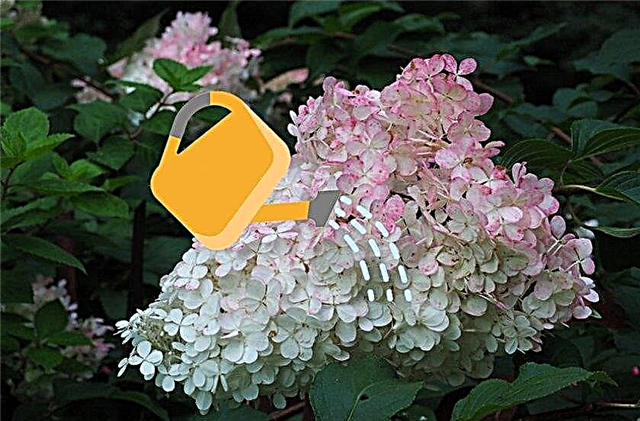
Due to its lush growth and intense flowering, Confetti has a high need for nutrients. In early spring (March – April) and late autumn (October), it is worth feeding plants with organic fertilizers.
Important! To make the color of the petals more intense and brighter, panicle hydrangea Confetti is watered with alkaline solutions.
You can use homemade compost or humus. They are scattered in the near-stem circle and thoroughly mixed with the topsoil. You can also use biohumus, that is, liquid nutrition, which is based on the litter of California earthworm - the desired dose should be diluted with water, and the solution should be poured under the root of the bush. Hydrangeas can also be fertilized with the help of mineral fertilizers designed specifically for caring for the crop. They can be granular or liquid.
How to use fertilizers:
- Pellets should be fed to plants during the period of their greatest growth, that is, from April to August. The dose of the drug crumbles under the bushes (in the irrigation zone) every 4 weeks.
- Liquid dressings are intended for application under the root (after dilution with water) or for spraying the crown. They are used mainly when hydrangea is diagnosed with a deficiency of minerals - for example, when bushes bloom poorly.
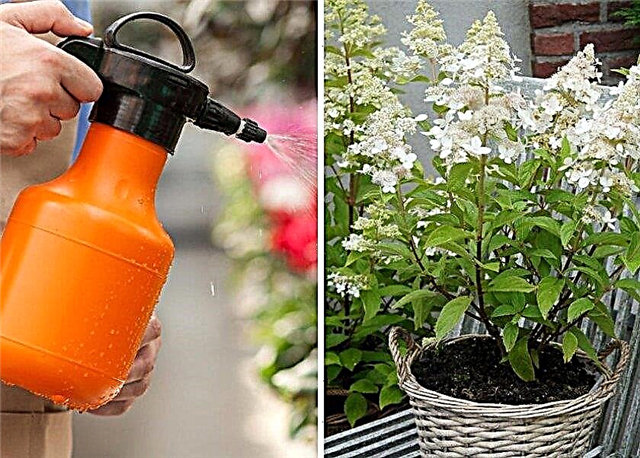
During the growing season, hydrangea is supported by nitrogen-containing fertilizers. However, from the end of August to October, you can feed the bush with phosphorus-potassium substances, this will increase the frost resistance of the plant and help it to form inflorescences in the next season.
Trimming and Shaping
Confetti pruning is best done in March before the buds open and leaves appear. Since the variety blooms on the shoots of this year, it runs little risk of suffering from frost or improper pruning. To get large flowers, cut branches low, about half a meter above the ground. The cut is done about 1 cm above the first pair of kidneys. The shrub will produce fewer panicles, but they will be more beautiful and larger.
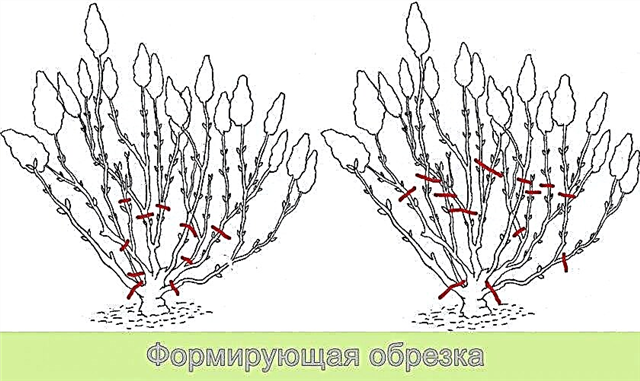
If the gardener wants the hydrangea to form a bush arbitrarily and bloomed strongly, it will be enough only to remove the dried up last year's inflorescences. With this pruning, the plant will produce many lateral branches on each shoot and, therefore, will seal the shape of the crown, but its panicles will be smaller.
Loosening and mulching
The surface of the soil under the bush should be kept clean and loose in order to absorb moisture well and pass oxygen to the roots. Gardeners are recommended to regularly cultivate the trunk circle. Due to the fact that hydrangea requires frequent watering, the soil in the root zone is quickly compacted, especially if this is done using a jet from a hose.
Important! If the gardener prefers traditional weeding and loosening of the flower bed, he should use the Fokin plane cutter on a long handle as a working tool. It will allow you to easily reach any part of the soil under the lush crown of hydrangea.
There is an effective technique to avoid the heavy manual work of weeding the flowerbed - mulching. It consists in the fact that a layer of organic or artificial materials is laid around the shrub that does not allow the roots to quickly dry out, and also to weed seeds. You can use organic mulch: compost, humus, finely chopped peat, pine bark, sawdust. These substances, slowly decomposing, along with protection will serve as food for Confetti. For these purposes, you can use artificial materials (black spanbond or polyethylene), small gravel.
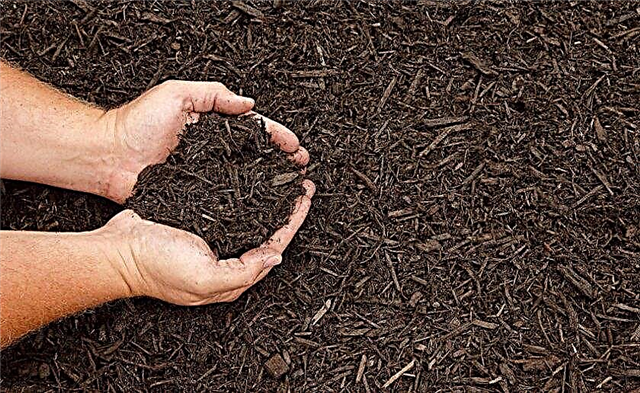
Winter insulation
Adult Confetti shrubs are completely frost-resistant and can withstand low temperatures to -30 ° C without problems. Due to this, they do not need additional insulation in any region of Russia. But cold tolerance does not apply to young seedlings, especially in the first winter after transplanting to a new place.
Since the plant requires strong pruning, the gardener does not have to wrap the aerial part (bush branches). It remains to warm the surface of the soil, under which the hydrangea root system is located. In the near-stem circle, mulch is laid from crushed pine bark or large sawdust from coniferous trees. If these materials are not available, you can simply pour on top a few buckets of earth, which will have to be removed in the spring. A thick layer of soil reliably protects the roots from freezing.
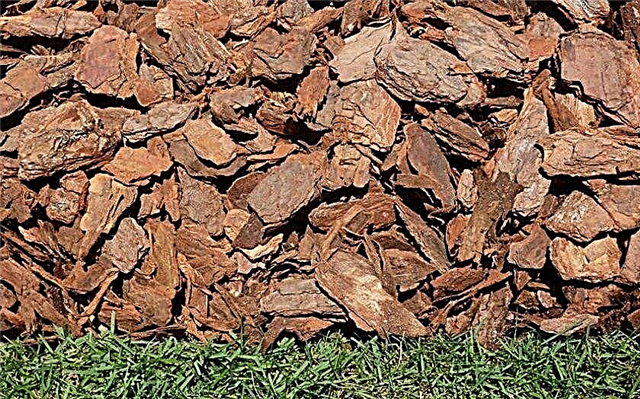
Breeding
Hydrangeas breed in several ways. Among gardeners, the most popular are two options: rooting of growing shoots (layering) and cuttings. The first method is the easiest, it requires the least physical and material costs.
Layering:
- To obtain in the future a separate plant with a developed root system, a branch is taken that grows on the mother bush. It does not need to be separated, just carefully tilted to the side and pressed to the ground with something heavy (brick, board). The operation can be performed both in spring and autumn.
- In the place where the shoot comes into contact with the soil (on top of them) several spades of soil are laid. Here the roots of the seedling will be formed and developed. The land here is always kept wet.
- It takes about a year to form a full-fledged root system of the young bush, after which the gardener secrets the seedling from the mother plant with a secateurs and replants it to a permanent place.
It is also easy to propagate hydrangea by cuttings; for this, planting material is cut into the mother bush in the form of small segments of branches. Usually choose a healthy plant, whose age is at least 5 years. The same operation can be done on a younger specimen, but the quality of seedlings will be an order of magnitude worse, weaker and some of it will not take root.
Cutting:
- This work is carried out between June and August.
- Cuttings from flowering shoots with two or three pairs of leaves take root best.
- The lower part of the branch on which the roots should form is treated with a growth stimulant (Kornevin, aloe juice, honey), and planted in sandy soil with the addition of compost.
- The nursery should be in a shaded place so that there is unhindered access of light, but the rays of the sun do not fall on seedlings. The substrate should always be kept always wet, for this it is watered daily.
- Seedlings form a full-fledged root system no earlier than in 3-5 months.
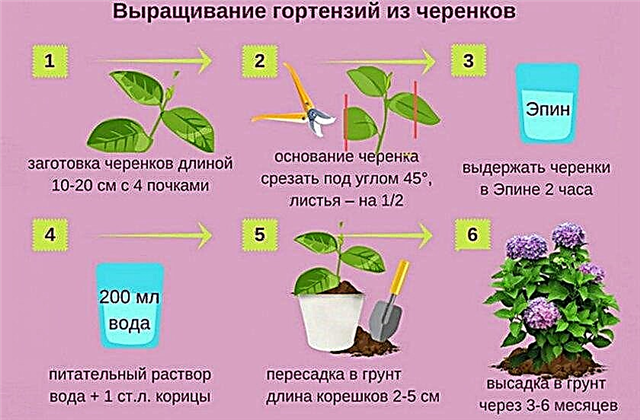
Diseases, pests and their control
A beautiful shrub with lush inflorescences can completely lose its decorative effect if it is sick or susceptible to attack by pests. At the first sign of their appearance, the gardener should take appropriate measures.
Did you know? Hydrangea is the botanical name for hydrangea in Latin. The word comes from the two Greek roots "water" and "capacity", which accurately describes the plant's need for moisture.
Possible diseases and pests of hydrangea:
- Bacterial diseases: rot (Pseudomonas solanacearum), causing wilting of plants and leaf spotting (Pseudomonas cichoria). Their occurrence is facilitated by long periods of rain and damp air. On the sheet plates, gray spots appear, gradually increase and eventually merge. Affected areas dry out and get enough sleep, which resembles the effects of the past hail. There are no drugs available to combat bacterial diseases.

- Fungal diseases: gray mold, powdery mildew, root rot, rust. As a struggle, antifungal drugs, for example, Rovral Flo 255 SC, Nimrod 250 EC or Score 250 EC, are sprayed on the surface of the bush using a pump-action garden sprayer.
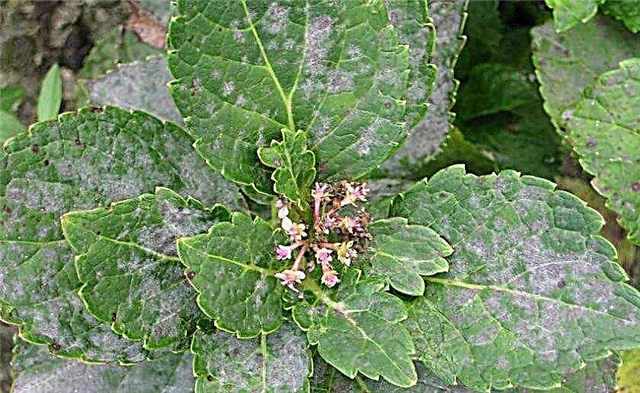
- Viral diseases: ring spotting, tobacco mosaic. There is no cure for these diseases, it is recommended to eliminate diseased plants.
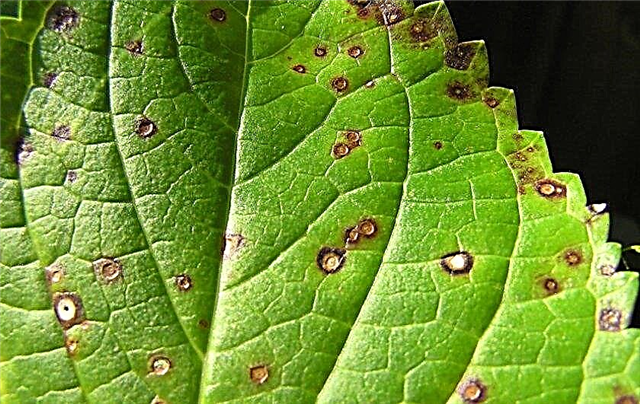
- Chlorosis: The problem is the lack of minerals arising from reduced absorption of iron in an alkaline environment. The main symptom is yellow leaves with distinctly visible green veins. To correct the situation, it is necessary to acidify the earth and make up the deficit by spraying the bush with the chelate of this element.
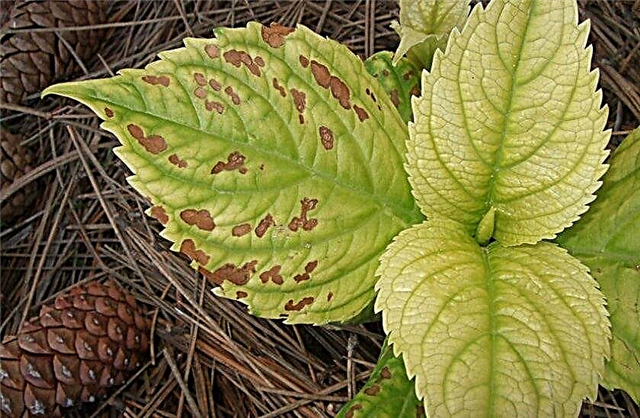
- Pests: In the spring, the aphids are often attacked by the aphids that ants bring to the plant. This problem can be solved in an ecological way, by packing packages with ladybug eggs (purchased in garden stores) next to Confetti. These insects are natural aphid predators. Also in a dry place, especially if it is potted hydrangea, spider mites may appear, feeding on the underside of the leaf plate, sucking out the juices. At the same time, mosaic discoloration appears on the upper side of the leaf, and a thin spider web appears in different parts of the plant. Both types of parasites can be handled by any insecticide sprayed on the surface of the shrub, for example, Talstar, Aktara or Karate.
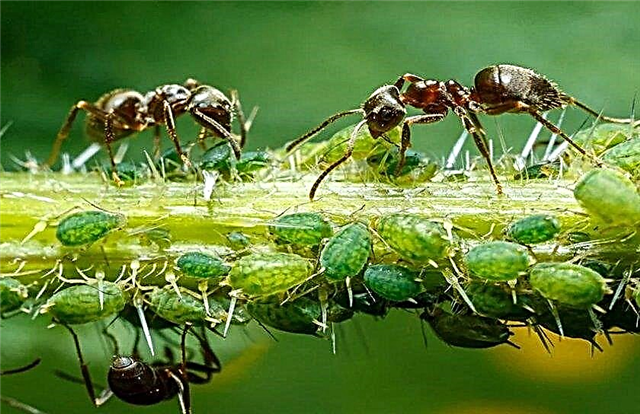
Hydrangea Confetti is a very beautiful deciduous shrub with large inflorescences in the form of long white-pink panicles. Gardeners should grow this variety, since it is not difficult to care for, and the abundant flowering of perennials will adorn the garden all summer for several decades.







